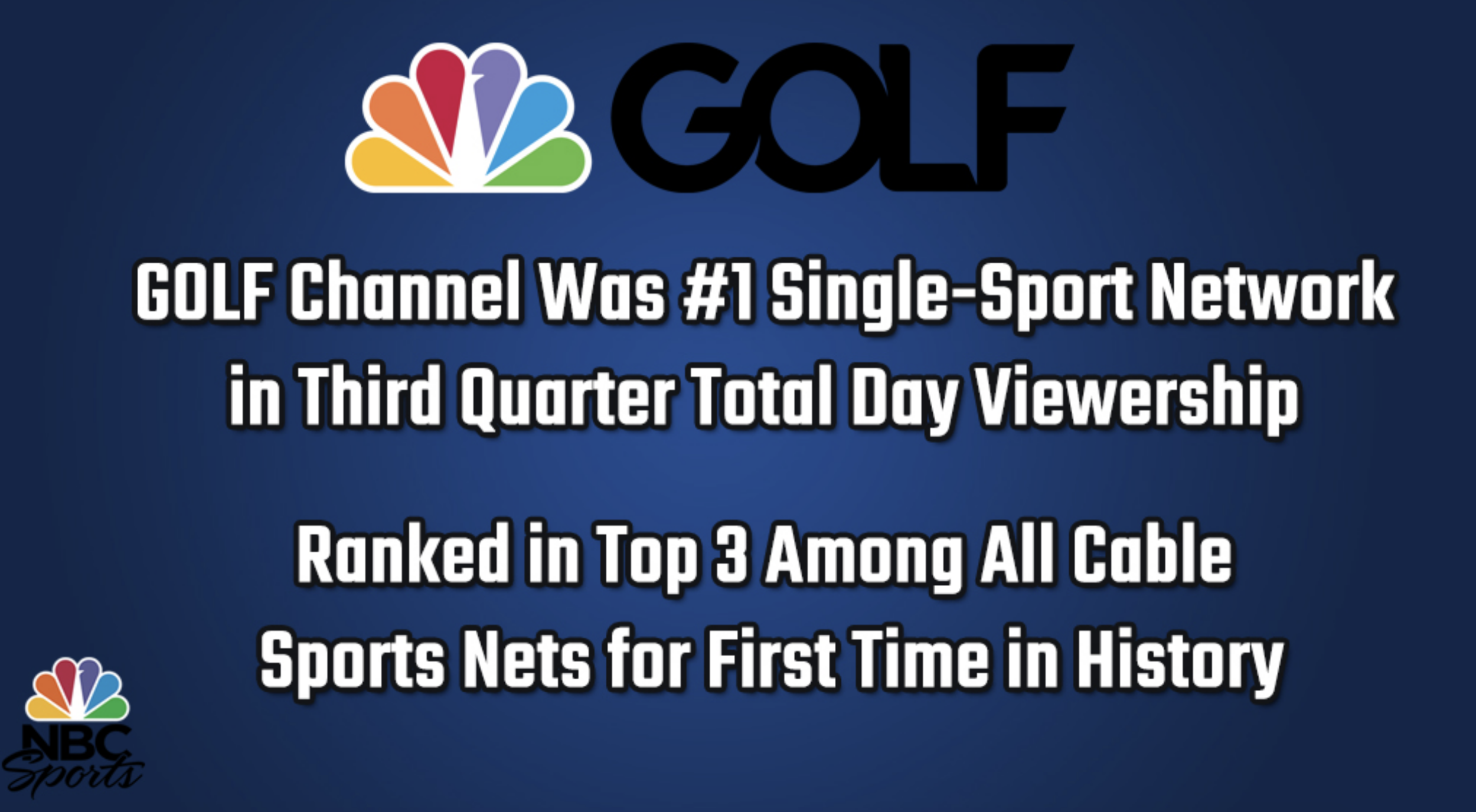CNBC’s Alex Sherman takes an in-depth look at how major media companies are preparing to lose another 25 million cable subscribers and why that may be expediting the demise of several channels.
The story is of particular note for golf given the references to Comcast (NBC, Golf Channel) and Discovery (GOLFTV). But also because all signs point to streaming becoming the required way to get your tournament viewing. Given that the platform is not the preferred way to watch for golf’s older demographic and is still remarkably clunky, it would appear golf’s major organizations relying on cable arrangements have a lot to lose.
As always please hit the link and read the entire story. Here are a few highlights for discussion purposes, starting with this
Moreover, a vicious cycle is settling in that could accelerate cable bundle defections. Distributors like Comcast and Charter no longer care that much whether or not a customer buys traditional pay-TV. The price of a video bundle has gotten so high, there’s little margin for them -- especially compared to broadband internet service.
“You get to that point of financial indifference, then you’re seeing the EBITDA margins go in the right direction and continue to increase,” Comcast CEO Brian Roberts said last month at the Goldman Sachs Communacopia Conference. “That’s one of the big pivots of Comcast the last decade.”
So instead of threatening blackouts to lower rates, pay-TV operators are accepting rate hikes, passing them along to subscribers, and accepting the fact that price-sensitive customers will cancel TV and go to internet only.
Meanwhile, media companies are shifting their best content to their new streaming services. The result for consumers is higher and higher prices for lower and lower quality.
If that wasn’t disturbing enough there is this:
And certain networks, like ESPN, which keep millions of Americans hooked to cable today, may need to pull back on programming costs if too many people cancel. That will only cause more people to cancel.
Stabilizing at 50 million (or 55-60 million, as AT&T CEO John Stankey said this week) may be a pipe dream.
“The only thing left holding the bundle together today is sports,” said former AOL CEO Jonathan Miller, who stepped down from the board of AMC Networks in July. “There is nothing any of the networks can do about it. The only question now is how far does it fall and how fast, and is there a bottom. And I don’t know if there’s a bottom.”
Regarding Discovery, home of GOLFTV…
Maybe media companies won’t have to worry about how to replace revenue from each cable subscriber with a corresponding streaming subscriber. Perhaps simply showing there’s a new growth engine that looks more like Netflix will push investors toward valuing the entire industry higher.
Right now, the market doesn’t seem to think existing media companies are capable of this. Discovery’s enterprise value/EBITDA multiple is 3.5. AMC’s multiple is 2.3. Those are terminal values. The average S&P 500 company typically has a multiple between 11 and 15. Netflix is valued at 33.5.
The possibility of cable profitability still stands a chance if some companies were to merge, though Sherman suggests that window may have passed.
Instead, what’s likely to happen in the next five years is the systematic consolidation and elimination of cable networks. NBCUniversal and ViacomCBS are both considering shuttering networks, though nothing is imminent or particularly close given current distribution deals, according to two people familiar with the matter.
“Media companies can consider consolidating underperforming networks with core channels, hoping to extract additional carriage revenue from a beefier network,” said Kirby Grines, founder and CEO of 43Twenty, a consultancy and marketing firm that provides streaming video strategy advice. “Consumers have loyalty to content and perhaps the companies they transact with. I’m not sure where networks fit into that equation, but it’s somewhere in a meaningless middle.”
Golf Channel joins NBC Sports network?
Either way, the decision will be made by the people who care the least about what viewers enjoy.
The forcing function on change will be Wall Street. If valuations keep declining, media companies will have to act.
LightShed’s Greenfield recommends a ripping-off-the-band-aid approach: Divest the networks now.
“Disney should divest its broadcast and cable networks, Comcast should divest the NBCUniversal cable networks, and there’s no reason why AT&T needs to own the Turner networks,” Greenfield said. “Cable networks are structurally broken.”
Divested and merged media companies will lead to more robust streaming services. This is why Disney agreed to buy Fox’s entertainment assets, including “The Simpsons” and movies such as “The Shape of Water” and “Avatar.”
But it may also accelerate the death of cable TV.
This would all be fine for golf’s various pro tours and majors if streaming worked better. But the same problem remains: golf watching is passive. Like baseball or tennis, it’s a sport we love to have on in the background. Basketball and football games are more active viewing pursuits where people sit down and watch most or all of the action. Each has their place in sports, but if streaming is the required platform, a move before the technology and viewers are ready will be deadly for golf viewership.




























